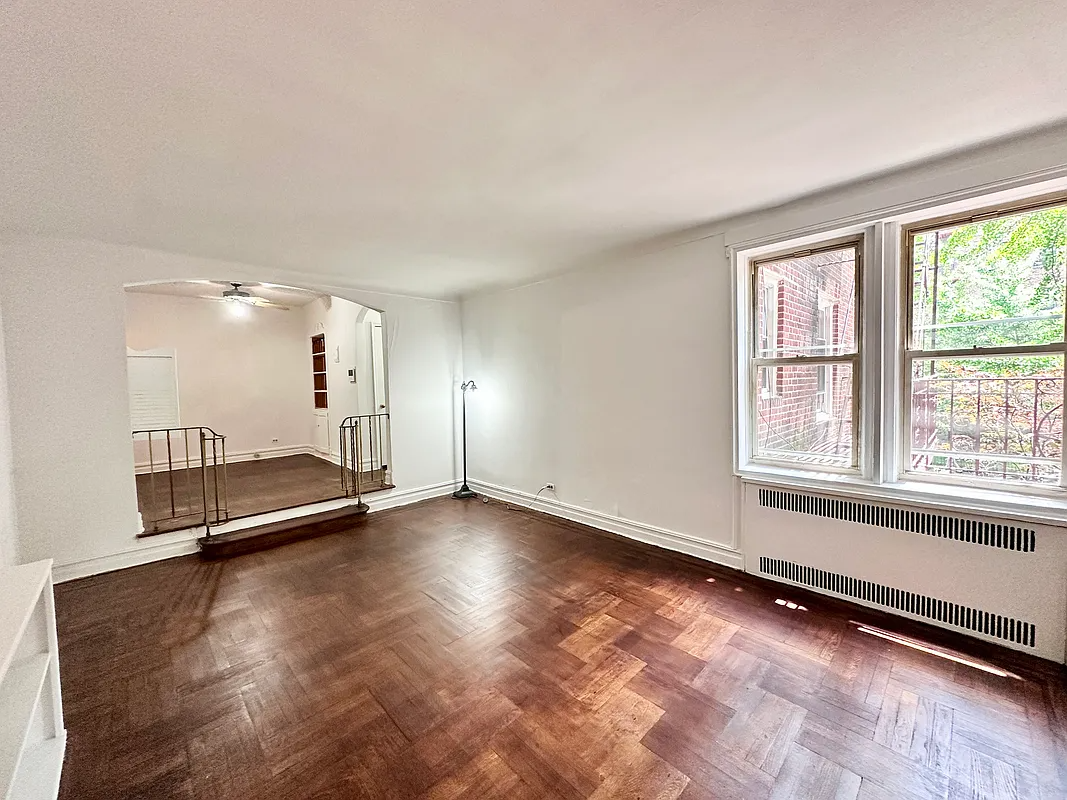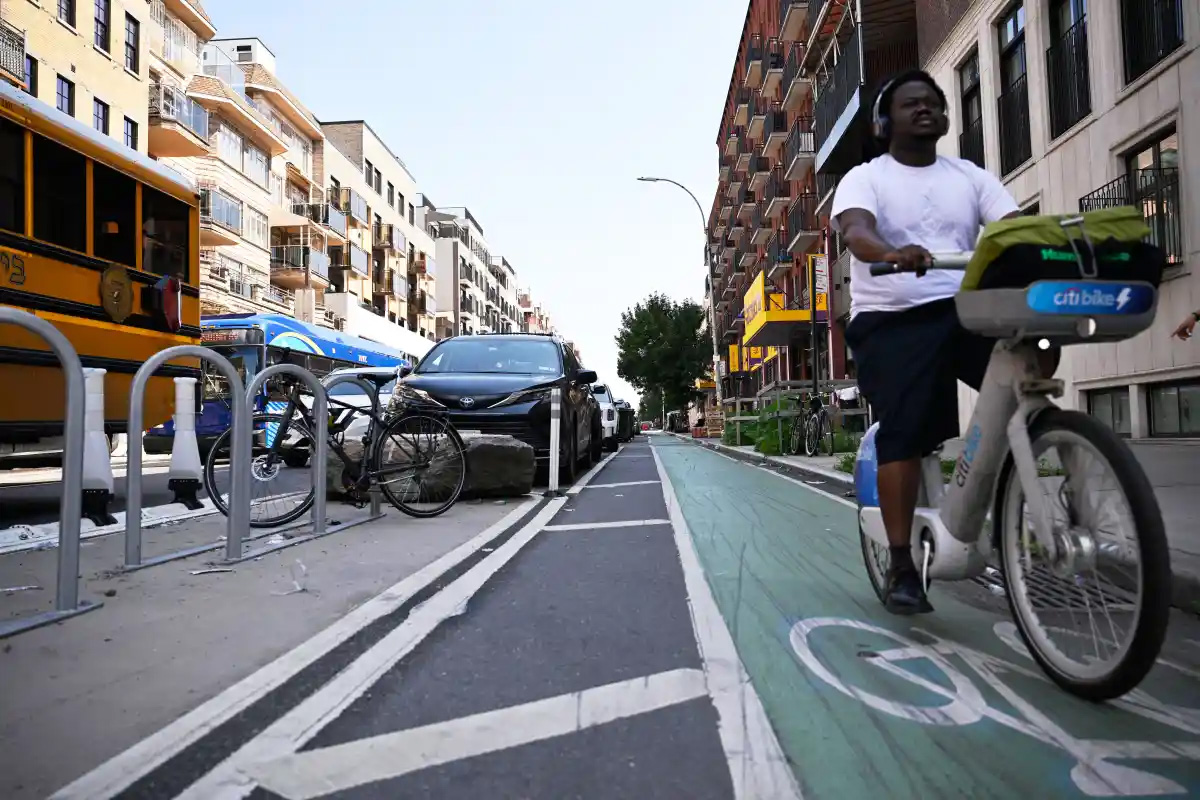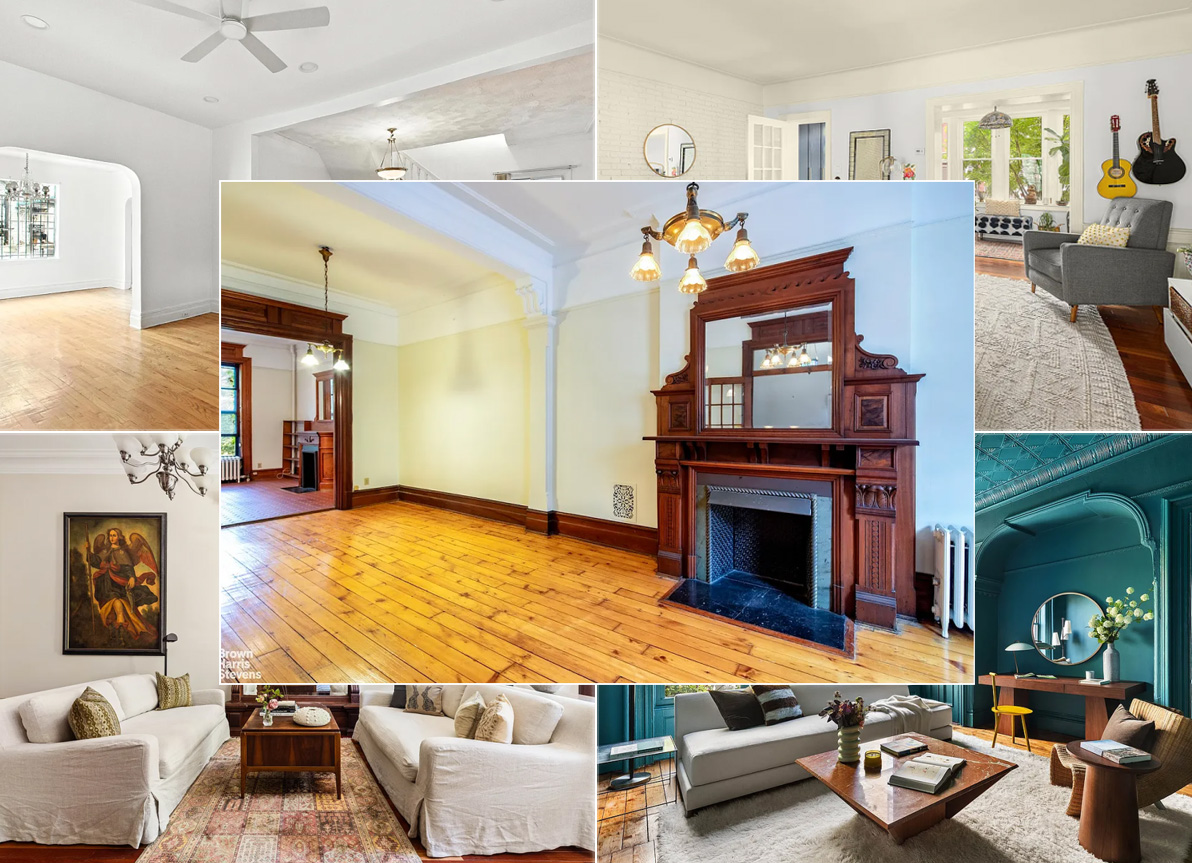Residential Sales in Brooklyn
BEDFORD-STUYVESANT $860,000 117 MacDonough Street 3-family, 106-year-old building; 2 bedrooms, dining area in two units; 1 bedroom in other; 1 bath, eat-in kitchen, fireplace, high ceilings, hardwood floors, original moldings and detail in each; 21-by-120-ft. lot; taxes $2,488; listed at $860,000, 1 week on market (broker: Weichert/H. P. Greenfield; Century 21 Kevin B. Brown) PARK…
BEDFORD-STUYVESANT $860,000
117 MacDonough Street
3-family, 106-year-old building; 2 bedrooms, dining area in two units; 1 bedroom in other; 1 bath, eat-in kitchen, fireplace, high ceilings, hardwood floors, original moldings and detail in each; 21-by-120-ft. lot; taxes $2,488; listed at $860,000, 1 week on market (broker: Weichert/H. P. Greenfield; Century 21 Kevin B. Brown)
PARK SLOPE $839,000
503 Eighth Avenue
3-bedroom, 1-bath, 1,104-sq.-ft. co-op in a 4-story brownstone; dining room, kitchen with granite countertops and stainless steel appliances, study; 395-sq.-ft. of basement space and exclusive rear garden rights; maintenance $457; taxes $2,832; listed at $839,000, 3 weeks on market (broker: Betancourt & Associates)
Residential Sales [NY Times]





it’s just a rational argument to justify why houses have increased in the nabe. a 4 story brownstone garners around $1500 more in rent than than it did three years ago. that increase carries $250,000 without counting for any improvement in the nabe… and the neighborhood has gentrified. prices go from $400,000 to $750,000 and people scream speculation.
Rents fall in Park Slope and prices increase and people say that makes sense.
historically, housing prices rise with the imputed rental value of the property. In a bubble, that becomes out of wack, like rents falling while prices go ganbusters. eventually, they will come back in line like they always do.
i’m not saying i made a great investment, i’m saying that arguments about bed sty being so overvalued compared to other parts of brownstone brooklyn aren’t true
Wow
This all sounds like a lot of self-justifying to me
So you like where you live and you think it’s a great investment. Great.
Your arguments are not only unconvincing, they’re patently self-dealing.
i respect everyone’s comments, but i just have to disagree.
first, i did say that “not much has changed”, but what i meant is that that bed stuy wasn’t and isn’t as bad as it’s made out to be in the first place. what i also meant, and didn’t put bluntly, is that if you walked around stuy heights two years ago, and you walk around now, you don’t see a significant change in the number of gentrifiers walking around. i was trying to drive home the point that people are swayed more by media and perception than realty. the guy i know walked around my nabe two years ago and saw a couple of people he could identify as “newcomers”. he returned after that article i spoke of and maybe saw 4 “newcomers” and now he thinks the nabe is changing like gangbusters. but, without all the media hype about bed stuy, he would simply think the nabe wasn’t changing fast enough.
the change that is happening is the change i spoke about that if feel warrants price increase, and that’s $ into the neighborhood. people are doing serious renovations on the houses. there are dumpsters all over the place (although it’s slowed a bunch from a year ago). the new people moving in, regardless of race, are of a much different income level than many of the long time residents. if feel it’s the combination of those two things(monied people and money on renovation) that justify the current price range. JUST LOOK AT THE RENTS, IF IT WAS ALL HYPE AND PERCEPTION, RENTS WOULD NOT BE RISING LIKE THEY ARE. boeurem hill(which i love, park slope…these nabes had that big initial wave years ago. the last couple of years have just been interest rate driven. rents are not increasing in these nabes as prices have skyrocketed? what does that say? is the nabe really hundreds of thousands of dollars better than it was last year eventhough there has been no significant change in the nabe?
there are several newcomers on my block that tell me they love their homes and don’t care if prices drop. Just the sunk costs of buying and selling a home in nyc are enough to make people not want to flip a house. with those rental units people are living very cheaply in stuy heights and close to manhattan(time wise)for double the size they would get just about anywhere else. i think it’s going to take a recession for people to get out of those homes. they have incredible brownstones and that’s what people want. i think the only way they sell out is if the city tanks and people leave the city. as long as the city economy stays strong, stuy heights is one of the safest bets in brownstone brooklyn.
Uh-oh, I’m in trouble! Too bad I sold my South Slope frame shit hole and upgraded to a lovely brownstone in Bed Stuy!
I’d have to agree with linus. I’ve lived in both transitional and gentrified Bklyn nabes. Right now I own a brownstone in Park Slope and yes, I paid 7-figures for it. Obviously I could have bought in Bed-Stuy instead. But, I feel much more comfortable with my PS purchase because regardless of where the market goes, I know that I will enjoy living here for possibly the rest of my life. I am confident tht someday, my property values will rebound if they take a hit.
With Bed-Stuy and the like, I feel there is a lot od speculation (I use the term loosely). Meaning speculation on the part of homeowners buying into a dream that has yet to materialize. I question the level of patience of many of these homeowners in the event there are setbacks and these areas do not evolve as rapidly as anticipated. These newcomers are not entirely vested – this is an experiment. As linus put it, they could very well head for the door all at once. I seriously doubt such a panic would occur in Bklyn Hts or Park Slope.
I want to continue this because this is interesting and you make a good point about cash flow. However… granting you that not that much has changed about Brooklyn Heights, etc except interest rates and perception. In your first post, though, you say exactly the same thing about Bed Stuy. To wit: “in reality Bed Stuy hasn’t changed much in the last year, just the perception.”
I agree. The A line and the housing stock have been there for decades. So if the main thing driving Bed Stuy’s meteoric rise is perception, that perception will be the first thing to change — and change sharply — if there is that downturn that also hits the other areas of Brooklyn. It’s not like people are going to say: “You know, maybe Fort Greene isn’t as great and safe as I thought. But Bed Stuy — its turnaround is irreversable! Brooklyn Heights may go to hell, but there’s no going back to the bad old days in nice stable Bed Stuy!”
Price drops in a downturn are about people being afraid to catch a falling knife (as well as people suddenly being able to prefer their first-choice neighborhood). Like it or not, the prevailing perception is still that Bed Stuy riskier (in all the ways people worry about when buying). You can call it racist, or uninformed, or whatever — but it still exists. That is a recipe for a big fall in a bad market — because if today’s $800K brownstone was a $300K brownstone just a couple years ago, people will believe that knife has far to fall.
But like you said, if you’ve got a solid cash flow to justify your investment, you’ve got nothing to worry about anyway, as long as you still like living in your neighborhood.
Here is my argument. feel free to blow holes in it, don’t hold my previous rant against me, i’m actually a cool dude:)
stuy heights will hold better in a downturn than other fully mature neighborhoods because in fully mature neighborhoods you are paying a premium to own when compared to the market rental price of renting your owner’s duplex(after renting out your rental units). stuy heights rents are rising quickly and many of the brownstones are being fixed up. there is significant quantifiable equity flowing into bed sty right now, like there was during the big waves of gentrification in Fort Green and Boerum hill years ago. people paying over 2 million dollars in places like park slope are paying a premium to own their house. rising rents and equity into the nabe are two big reasons for stuy heights prices rising so quickly. i’ve seen rents staying the same and even falling in very expensive parts of brownstone brooklyn the past 3 years. that premium people pay to own in the very expensive neighborhoods can be wiped out quickly if people become turned off by the real estate market. you can still buy a large three story four family brownstone along the A line for 700-800 grand. a nice 2 bed rental unit can command now up to 1500-1600, and rents are steadily rising here. you buy for 750,000, put 20% down, and your mortgage is around $3700. you get $3000 in income, and your payment is down to $700. Add in taxes, insurance, electric, gas, and you are around $1300 a month. duplexes on the landmark blocks rent for around $2000-2500. Not even counting the tax right off, your living for 60% of the price of renting your duplex. in other words, forget the neighborhood, the building would carry itself as a rental project. how’s that speculating? your just buying cash flow. i’d say it’s still undervalued and has another couple hundred thousand of apreciation to go. If the sales market crashes, you are protected. in bourem hill you pay 1.8 million. you put down 20%(which incidentaly is more than twice the downpayment on the stuy heights home, and you pay mansion tax) you rent the two bedrooms for $2400 each, and you payment is down to $4,000. add in all the carry and you are up to $4,600. could you rent the duplex for $4,600? maybe, but i think your paying a premium. would you buy the cash flow stream? no, unless you want to lose money every month. thus in the scenario where nobody wants to own real estate to live and the premium is wiped out, prices will fall until people can make money renting the properties absentee landlords, and more expensive houses that don’t carry will fall more. plus you have a much greater equity stake at risk. you are safer paying 800,000 on MacDonough between stuyvesant and Lewis right now that you are paying 2.2 million on Fort Green park in the event of a downturn.
ask yourself why Brooklyn Heights is so much higher now than it was three years ago? wave of gentrification? nope.., many new services? nope..
people fixing up blocks of brownstones?nope..all this happened a long time ago. they rose simply because of lower interest rates and a change in perception, which is easily reversed. i know it seems like a contrarian aproach, but it makes sense if you really think about it
I recently moved from the Slope to the Stuy. Although I miss the wide range of restaurants, I’m finding that it’s alot more convenient than other brownstone neighborhoods as far as location goes. 11:57 did mention that the A line is superior to the C or G. The fact that Bed Stuy TRULY IS 15 minutes to W.4th St (I timed it), convenient to major highways and has some of the nicest brownstones in the city has convinced me that it’s not going anywhere but up. But then, I always look at the positive.
I’m not totally sure I get the point of anon 11:57’s post, but… I think that “all the doomsday people” would say the same thing today that they’d have said before: that if there is a bubble burst, places like Bed Stuy, which have seen the hugest percentage price jumps in the shortest time and which are in the earliest stages of gentrification, will depreciate more than most.
I think Stuy Heights is pretty too, but I see nothing in your post that convinces me it would hold its value as well as Fort Greene or CH if there were an early-90s-style bubble burst.
But then, I’m not a doomsday person.